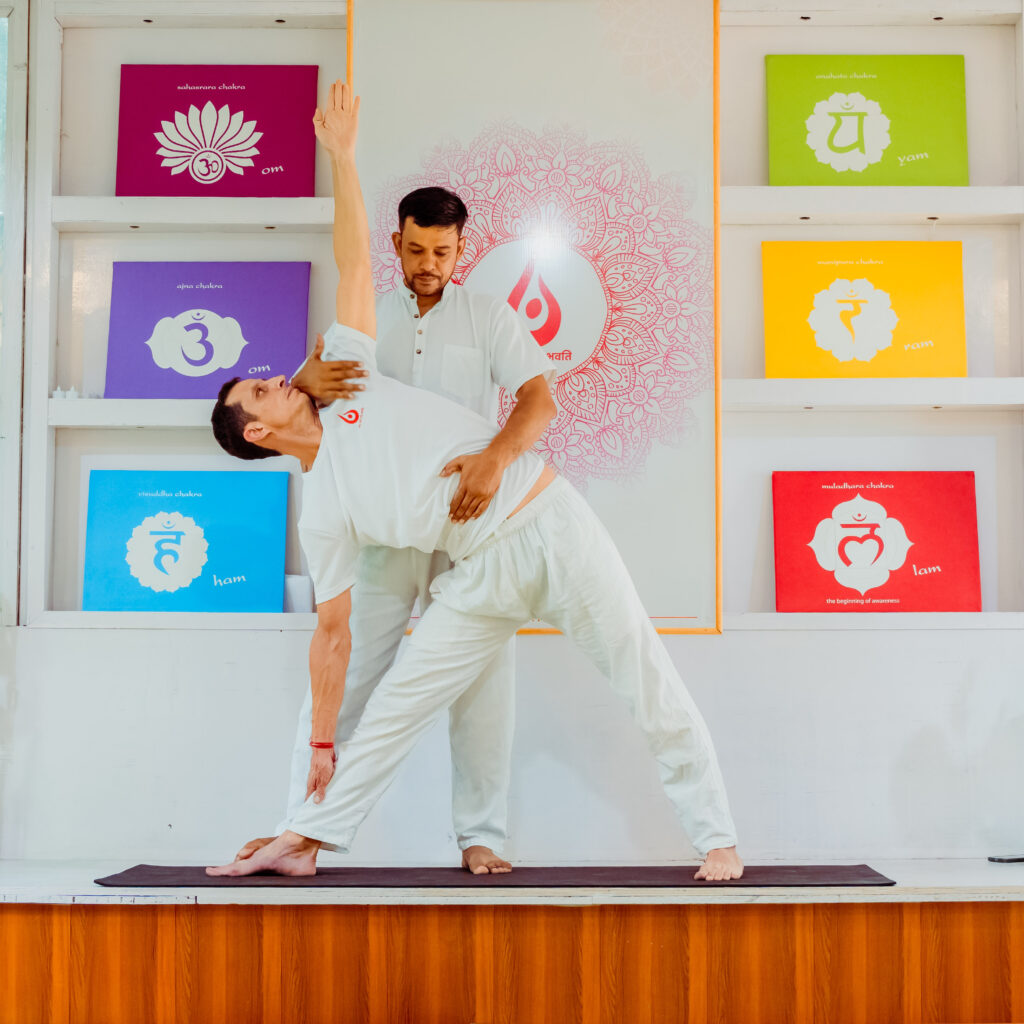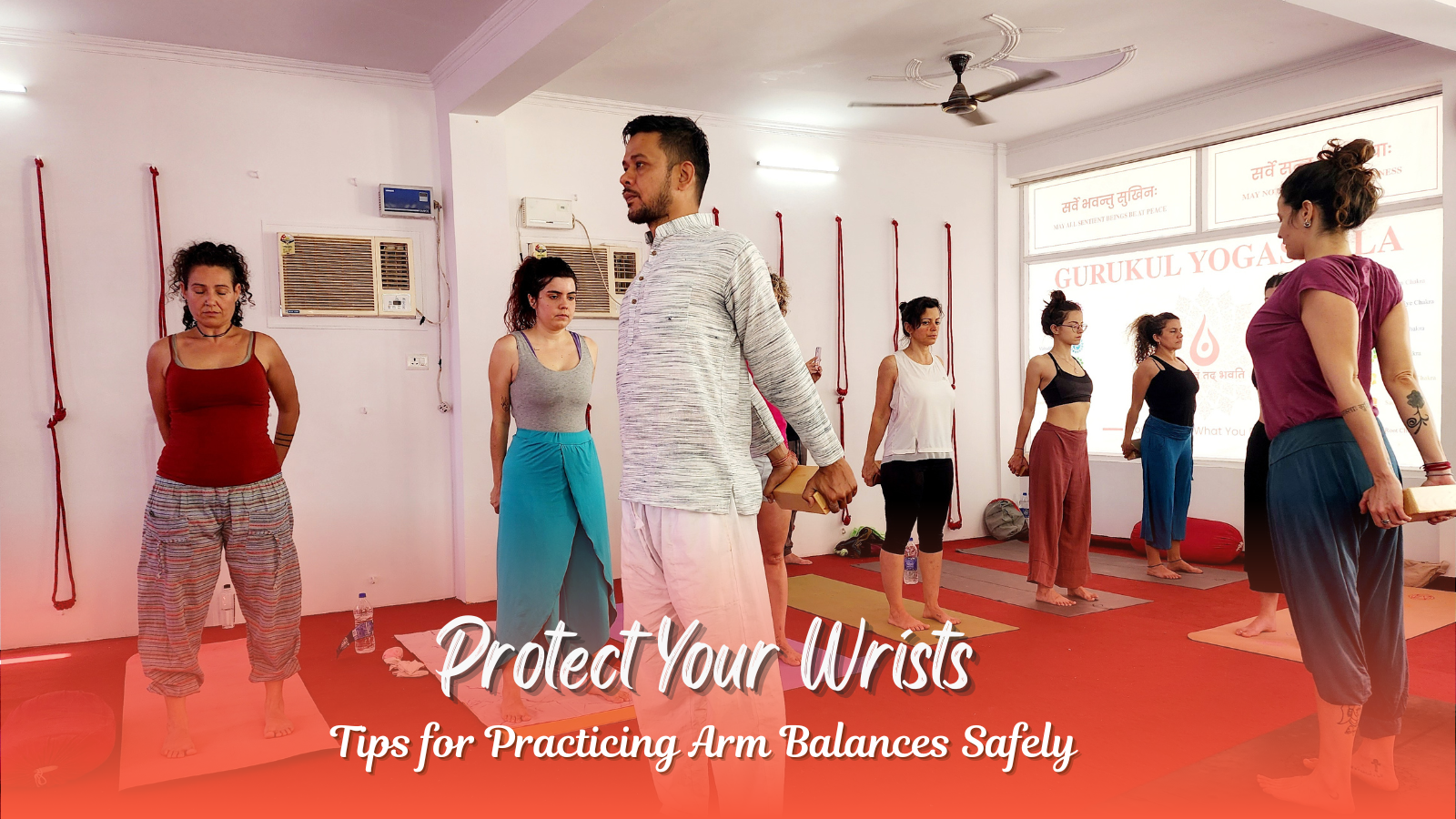Yoga arm balance poses are some of the most visually impressive yet technically challenging poses in yoga practice. They require a combination of strength, flexibility, balance, and mental focus. Many beginners struggle with these poses due to a lack of proper technique and preparation.
If you’re wondering how to arm balance in yoga, this guide will walk you through everything you need to know—from wrist preparation to alignment techniques. Whether you’re a beginner or an advanced practitioner, joining a yoga teacher training school in Rishikesh can provide you with expert guidance on perfecting your arm balances safely.
What Are Yoga Arm Balances?
Yoga arm balance poses involve supporting your body weight primarily on your hands while engaging your core and upper body muscles. These poses help improve strength, flexibility, and focus.
Benefits of Yoga Arm Balances
- Enhances Core Strength: Engages the abdominal muscles for better stability.
- Improves Upper Body Strength: Strengthens arms, shoulders, and wrists.
- Increases Focus & Mental Clarity: Requires concentration to maintain balance.
- Boosts Flexibility: Stretches and strengthens various muscle groups.
- Develops Confidence & Mindfulness: Teaches patience, persistence, and body awareness.
Popular Yoga Arm Balance Poses
Here’s a yoga arm balance list of some commonly practiced postures:
- Bakasana (Crow Pose) – A beginner-friendly pose that builds wrist and shoulder strength.
- Kakasana (Crane Pose) – A variation of Bakasana with straighter arms.
- Eka Hasta Bhujasana (One-Legged Arm Balance) – Strengthens the core and shoulders.
- Vrschikasana (Scorpion Pose) – A challenging pose that requires both flexibility and strength.
- Parsva Bakasana (Side Crow Pose) – Works on arm strength and twisting flexibility.
If you’re struggling with these poses, consider enrolling in a 200-hour yoga teacher training course in Rishikesh, where experienced instructors will guide you step-by-step.

Why Wrist Health is Important for Arm Balances
Your wrists act as the foundation in arm balance poses, supporting your body weight. If they aren’t strong enough, you risk injury.
Key Factors for Wrist Health:
- Warm-up exercises – Prepares wrists for the pressure of arm balances.
- Strength training – Builds endurance and flexibility in wrists.
- Correct alignment – Ensures even weight distribution to prevent strain.
- Therapeutic exercises – Helps recover from any strain or pain.
At Gurukul Yogashala, a leading yoga teacher training school in Rishikesh, students learn wrist anatomy and strengthening techniques to prevent injuries.
Wrist Anatomy: Understanding the Basics
The wrist consists of eight carpal bones, ligaments, and a complex system of tendons and nerves forming the carpal tunnel. These elements provide mobility and strength, allowing the wrists to support weight in various arm balances.
- Keeping joints active and mobile prevents stiffness.
- Engaging in wrist exercises ensures better stability.
- Understanding alignment and pressure points helps in preventing injuries.
In Hatha Yoga, joint health plays a crucial role in mastering complex poses. Students in the best yoga teacher training in Rishikesh learn in-depth about wrist mechanics through practical lessons.
How to Prepare Your Wrists for Arm Balances?
Before attempting yoga arm balance poses, practicing wrist warm-ups can significantly reduce the risk of injury.
Effective Warm-Up Exercises:
- Wrist Rotations:
- Extend arms forward and rotate wrists in both directions.
- Anjali Mudra (Prayer Pose):
- Press palms together at chest level and lower hands gradually.
- Hand Lifts:
- Place hands on a table edge and lift them while keeping fingers relaxed.
These warm-ups help improve wrist mobility, making yoga arm balance poses for beginners easier to achieve.
Proper Alignment in Yoga Arm Balances
Alignment is crucial when practicing yoga arm balance postures. Incorrect form can lead to strain or injury.
Step-by-Step Guide for Bakasana (Crow Pose)
- Start in Malasana (Garland Pose):
- Feet flat on the ground, knees wide apart.
- Place Hands on the Ground:
- Keep hands shoulder-width apart with fingers spread.
- Engage Core & Lift Hips:
- Rising on your toes, shift your weight forward.
- Hook Knees onto Upper Arms:
- Keep your gaze forward to maintain balance.
- Hold the Pose:
- Breathe deeply and balance for 5-10 breaths.
- Release Gently:
- Lower one leg at a time to return to Malasana.
This pose is a fundamental yoga arm balance pose that builds strength for more advanced postures. In the 300-hour yoga teacher training in Rishikesh, students refine these poses with expert guidance.
Techniques for Improving Arm Balances
To master arm balances, follow these expert techniques:
- Improve Wrist Flexibility: Stretch and strengthen wrists daily.
- Distribute Weight Evenly: Avoid placing all weight on one point.
- Build Scapular Strength: Strengthen shoulder muscles to support balance.
- Engage the Core: A strong core prevents wobbling.
- Practice Mindfulness: Focus on breath and body awareness.
At Gurukul Yogashala, students in 500-hour yoga teacher training in Rishikesh learn advanced alignment techniques for perfecting arm balances.
Conclusion
Mastering yoga arm balance poses requires patience, strength, and proper training. While self-practice is beneficial, professional guidance at a yoga teacher training school in Rishikesh ensures a safe and effective learning experience.
At Gurukul Yogashala, a Yoga Alliance-registered school, students gain in-depth knowledge of alignment, adjustments, and modifications to perfect arm balances and other advanced asanas.
If you’re looking for the best yoga teacher training in Rishikesh, consider enrolling in:
✅ 200-Hour Yoga Teacher Training – Perfect for beginners.
✅ 300-Hour Yoga Teacher Training – Ideal for intermediate learners.
✅ 500-Hour Yoga Teacher Training – For advanced practitioners.
Enhance your yoga journey and master arm balances with expert teachers in Rishikesh – the Yoga Capital of the World!


